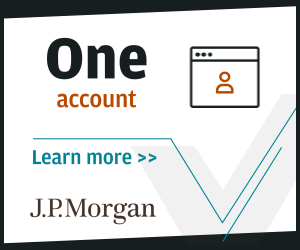Geared towards the executive membership of AFP, Executive Guides take an in-depth look at specified topics that are developed via interviews with treasury executives. They are presented as studies, with practical applications and tools such as models and checklists.
Virtual Accounts Management
Underwritten by J.P. Morgan

With organizations more focused on cash than ever before, finance is under pressure to operate as efficiently as possible. To that end, virtual accounts are an available technology that has helped organizations use cash and working capital with greater functionality.
This Executive Guide, underwritten by JP Morgan, explains how virtual account structures have the potential to deliver enhanced visibility to, and control of, cash, all while reducing operational costs and meeting a company’s needs.
Learning Objectives:
- Learn what virtual accounts are, how they are setup, and the many functions they enable.
- Learn about virtual account flexibility, the technology required for them, and how they enable better risk management.
1. Introduction
With advances in technology and regulatory change has come one of the most noticeable trends in treasury: the gradual centralization of activity to achieve more visibility and control of cash.
2. Virtual Accounts Explained
A virtual bank account is a sub-account within a traditional physical bank account held by a company with a bank. Virtual accounts may be directly addressable with their own bank account number, or assignable via an additional reference number. This means a company can make and receive external payments directly to a virtual account, as well as manage intercompany payments between virtual accounts.
3. Benefits of Virtual Accounts
Benefits to virtual accounts include visibility and control of cash, automation, financial risk management, reports and audits, and operational benefits.
4. Looking to the Future
Virtual accounts were being used in Europe initially, but we are seeing an increase in use of virtual bank accounts on APAC and North America. The biggest driver behind VAM adoption will be treasury and finance’s need to improve visibility of cash. Earlier access to more accurate information will help organizations to become more efficient and to make better business decisions.
5. Implementing a Virtual Account Structure
Although the key benefits of virtual accounts derive from their simplicity, achieving those benefits is only possible if the accounts are implemented effectively. There are multiple steps to take in preparation for implementing virtual accounts as well as executions for post-implementation.
6. Key Takeaways
For all users, virtual account structures have the potential to deliver enhanced visibility and control of cash, while reducing operational costs and, they can be designed to meet any company’s needs. Download the guide to view the three main takeaways.

